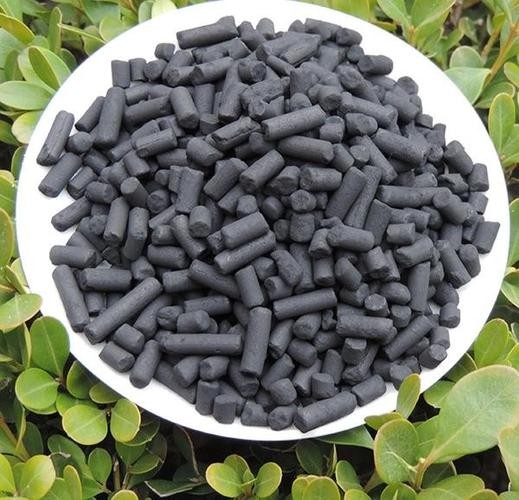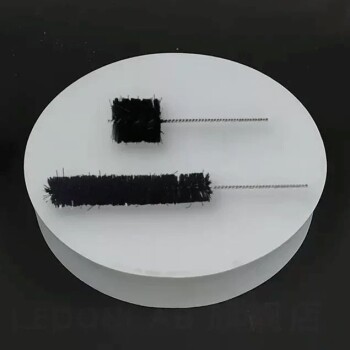In the process of use, activated carbon can be saturated and loses its adsorption capacity. The carbon can be used multiple times before it needs to be replaced.
Activated carbon regeneration is the most effective way to increase the lifespan of your activated carbon. Not only does this method save you money in the long run, but it also decreases your carbon footprint. By using less virgin carbon, you are contributing to a greener planet.
What is Activated Carbon Regeneration
Regeneration can be used to clean up a contaminated activated carbon and also to extend the life of the carbon.Activated carbon regeneration is a process that removes adsorbed materials from activated carbon without destroying the original structure of the carbon.
Before choosing the activated carbon regeneration method, it is important to have a clear understanding of the treated object and the scale of treatment.
Activated Carbon Regeneration basis are as follows:
- Activated Carbon External heating to raise the temperature to change the equilibrium conditions, as the amount of adsorbed mass decreases - with increasing temperature, thus desorbing the adsorbed mass.
- Changing the chemical properties of the adsorbate.
- This is a common method for removing an adsorbate from a surface. The adsorbate is extracted with a solvent that has a strong affinity for it. This can be done by washing the surface with the solvent or by passing the solvent over the surface.
- One option for regenerating used activated carbon is to replace the adsorbate with a substance that has a high affinity for the carbon. After the replacement substance has been desorbed, the activated carbon can be regenerated. This process can be repeated multiple times to extend the life of the carbon.
- To lower the concentration (or pressure) of the solute in the solvent, one can use a variety of methods such as evaporation, distillation, or extraction. By doing this, theadsorbate is desorbed from the surface of the adsorbent, and the concentration of the solute in the solution is lowered.
- Organic matter can be removed from surfaces by decomposition or oxidation. Decomposition is the breakdown of organic matter into smaller pieces, while oxidation is the chemical reaction of organic matter with oxygen. Both of these processes can be used to remove organic matter from Activated Carbon surfaces.
Regeneration Methods of Activated Carbon
There are various regeneration methods for activated carbon, like thermal regeneration method, biological regeneration method, wet oxidation method, solvent regeneration method, electrochemical regeneration method, catalytic wet oxidation method, etc. Each regeneration method has its own advantages and disadvantages, so the choice of a regeneration method for activated carbon should be based on the specific situation. If the activated carbon is heavily contaminated, it may need to be regeneration more frequently, so a regeneration method that is less time-consuming and more effective would be preferable.
Thermal Regeneration Method
The thermal regeneration method is one of the most mature activated carbon regeneration methods in the industry. The main advantage of this method is its simplicity and low cost. However, it is also one of the most energy-intensive methods, and can potentially damage the activated carbon.
The drying stage is to remove the moisture in the activated carbon by heating, and the high-temperature carbonization stage is to heat the dried activated carbon to a certain temperature to decompose the organic matter and make the surface of the activated carbon more porous. The activation stage is to use an oxidizing agent to further oxidize the surface of the high-temperature carbonized activated carbon, so that the specific surface area of the activated carbon becomes larger and the adsorption capacity becomes stronger.
In the drying stage of activated carbon production, the volatile components are mainly removed. This is done by heating the activated carbon to a temperature of around 600 degrees Celsius. This removes the water, oxygen and other volatile components, leaving the carbon behind.
The high-temperature carbonization stage is an important part of the activated carbon production process. In this stage, part of the organic matter adsorbed on the activated carbon boils, vaporizes and desorbs, while the residual components remain in the pores of the activated carbon to be fixed carbon. To avoid oxidation of the activated carbon, the process is usually carried out under vacuum or inert atmosphere.
This is the key to the whole regeneration process. In the next stage of activation, CO2, CO, H2 or water vapor are introduced into the reactor to clean up the micro-pores of the activated carbon and restore its adsorption performance.
Thermal regeneration is a waste heat recovery method that uses high temperature waste heat to regenerate an adsorbent for further use. The thermal regeneration process typically requires additional energy for heating, which can result in increased investment and operation costs. However, the method has the advantages of high regeneration efficiency and wide applicability.
The equipment used in this process is the electric activated carbon regeneration furnace and the gas-fired activated carbon regeneration furnace. This process uses high temperatures to remove the contaminants from the activated carbon.
Biological Regeneration Method
This method is to use domesticated bacteria to resolve the organic matter adsorbed on the activated carbon and further digest and decompose it into H2O and CO2. The reactivation of used carbon by this method is called the activated carbon biological regeneration method. The advantage of this method is that it can achieve the purpose of regeneration activated carbon while reducing the cost of waste disposal.
The pore size of activated carbon is very small, usually only a few nanometers. This means that microorganisms cannot enter the pores, and that cell autolysis (cell self-destruction) occurs during the regeneration process. Enzymes flow to the extracellular space, and activated carbon has an adsorption effect on enzymes, forming an enzymatic center on the surface of the carbon. This catalyzes the decomposition of pollutants and achieved the purpose of regeneration.
The activated carbon biological method is simple and easy to implement, with low investment and operating costs. However, it takes a long time and is greatly influenced by water quality and temperature.
Wet Oxidation Regeneration Method
The wet oxidation regeneration method is a popular choice for activated carbon regeneration. Under high temperature and pressure, oxygen or air is used to oxidize and decompose the organic matter adsorbed on the activated carbon. The activated carbon is then taken out of the reactor and washed. The organic matter is completely decomposed and the activated carbon is sent back to the adsorption unit. The whole process is completed in a cycle.
The best regeneration conditions of activated carbon are as follows: regeneration temperature 230 °C, regeneration time 1 h, oxygenation PO 20.6 MPa, carbon addition 15 g, water addition 300 mL. The regeneration efficiency reached 45±5%, and after 5 cycles of regeneration, the regeneration efficiency only decreased by 3%.
The partial oxidation of activated carbon surface micropores is the main reason for the decrease of regeneration efficiency. The regeneration efficiency of activated carbon decreases as the carbon is partially oxidized. The main reason for the partial oxidation of activated carbon is the presence of oxygen in the regeneration atmosphere.
Solvent Regeneration Method
The solvent activated carbon regeneration method is a process of breaking the adsorption equilibrium by changing the temperature, pH value of solvent and other conditions to desorb the adsorbed material from the activated carbon. This method uses the phase equilibrium between activated carbon, solvent and adsorbed material to its advantage. By changing the temperature and pH value of the solvent, the adsorbed material is forced to leave the activated carbon and be collected in the solvent.
The advantages of the solvent activated carbon regeneration method are that the regeneration semester is short, the adsorption efficiency is high, and it does not produce secondary pollution. The main disadvantages are that the regeneration cost is high, the process is complex, and the overall water treatment cost is increased.
Solvent activated carbon regeneration method is more suitable for those reversible adsorption, such as the adsorption of organic wastewater with high concentration and low boiling point. It is more targeted, often a solvent can only desorb certain pollutants, while the water treatment process of a wide range of pollutants, variable, so the application of a specific solvent is narrow.
Electrochemical Regeneration Method
The electrochemical activated carbon regeneration method is a new type of activated carbon regeneration technology. In this method, activated carbon is filled between two main electrodes, and a DC electric field is added to the electrolyte. Under the action of electrochemical oxidation and reduction, the organic matter adsorbed on the activated carbon is degraded or decomposed, and the activated carbon is regenerated. The advantage of this regeneration method is that it can be performed in a short time, and the use efficiency of activated carbon is improved. This method is also more environmentally friendly than other methods of regeneration, as it does not produce any harmful byproducts.
The activated carbon is polarized under the action of electric field, with one end being anode and the other end cathode, forming a microelectrolytic cell.
Electrochemical activated carbon regeneration method is easy to operate and has high efficiency and low energy consumption, and its treatment object is subject to less limitations, and if the treatment process is perfect, secondary pollution can be avoided.
Catalytic Wet Oxidation Method
The traditional wet oxidation method for regenerating activated carbon has relatively low efficiency but large energy consumption. The main reason for the low regeneration efficiency is the regeneration temperature. However, increasing the regeneration temperature will also increase the surface oxidation of activated carbon, thus reducing the regeneration efficiency.
Related Products
- Electric Rotary Kiln Small Rotary Furnace for Activated Carbon Regeneration
- Conductive Carbon Fiber Brush for Static Removal and Cleaning
- HFCVD Machine System Equipment for Drawing Die Nano-Diamond Coating
- Laboratory Hydraulic Pellet Press for XRF KBR FTIR Lab Applications
- Vacuum Sealed Continuous Working Rotary Tube Furnace Rotating Tube Furnace
Related Articles
- Comprehensive Guide to Muffle Furnaces: Applications, Types, and Maintenance
- Optimizing Industrial Processes: Rotary Kiln and Laboratory Furnace Solutions
- Electric Rotary Kiln Pyrolysis Furnace: Design, Operation, and Applications
- The Importance of Activated Carbon Regeneration in Water Treatment
- What is activated carbon regeneration Rotary Furnace















